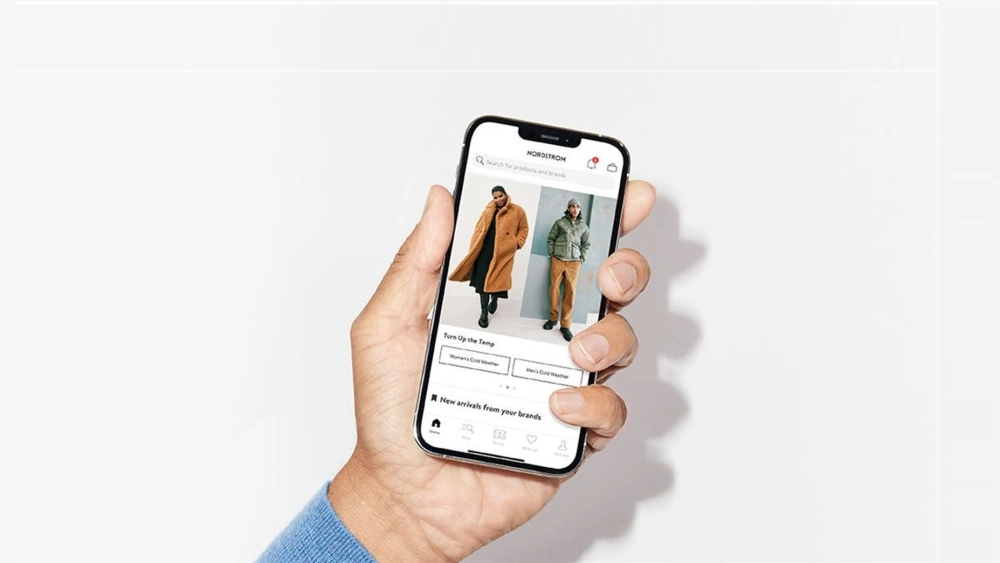How Nordstrom is Using a Marketplace Model to Transform its Merchandising Strategy

As eCommerce growth remains top of mind in the retail industry, iconic American department store brand Nordstrom is fully invested in creating a seamless experience both in-store and online. They recently launched their first marketplace, powered by Mirakl, in order to keep up with customer expectations and offer a wider, curated assortment of products.
Nordstrom is integrating their marketplace model across its business, in order to drive eCommerce growth and create a seamless feedback loop between its merchandising and digital teams.
Why Nordstrom launched a marketplace
Nordstrom is continuing to invest in digital growth, which accounted for 36% of Nordstrom’s total sales of $14.22 billion last year. In a Q&A with Nordstrom’s President of Digital and Customer Experience, Miguel Almeida, he shares that the decision to adopt a marketplace model was rooted in the customer experience.
“We always want to offer customers a sense of discovery when they shop with us – whether that’s in one of our stores or on our digital platforms. We know our customers and understand the products they’re searching for regularly across our digital platforms – we know what they love, and we know where we can grow our assortment to better meet their needs,” said Almeida.
Additionally, Almeida explained how a marketplace model will help Nordstrom enhance their assortment to promote greater size inclusivity, offer new brands for a broader set of occasions, and accelerate assortment to appeal to younger customers.
How a marketplace model supports merchandising teams
A marketplace model enables Nordstrom’s merchandisers to prioritize the products that are more likely to sell and create a consistent customer experience.
“We don’t have unlimited dollars. Our merchants have to make very hard choices around the breadth and depth of brands we sell to make the economics of our business work. Marketplace allows us to break free from those economics,” says Almeida.
With the ability to onboard third-party sellers and expand product assortments, merchandisers can use insights to identify emerging trends and high-demand items, and make the best decisions for product selection, pricing strategies, and inventory allocation. This gives teams a leg up to swiftly adapt to changing market dynamics, drive revenue growth, and continue improving the customer experience.
“The idea is to be agile in showing customers relevant products and brands that we believe they will love,” Almeida said. “As soon as we see that traction, our merchandising teams are informed in terms of what they would want to buy and put in stores. Absolutely, this is a way for some brands to show up in our stores.”
A marketplace model also puts cannibalization concerns at ease, as Nordstrom is using the marketplace to deepen its offerings in core categories, ensuring that the retailer continues to be the go-to destination for luxury fashion and accessories.
“It’s not necessarily a category extension strategy. It’s more about amplifying the categories that we have and serving customers better in those categories,” says Almeida.
Marketplace is one of the top priorities for retail innovation leaders, according to a recent report by Boston Consulting Group. The Nordstrom team is integrating the marketplace across its entire strategy, including styling and alterations services.
"There’s a very deliberate connection between the marketplace and our stores,” Almeida said. “Our stylists have access to style boards and will be able to complement their styling consultations with broader assortments than what they have in the stores. We can also set up alterations for products bought on the marketplace. There’s a service integration.”
Nordstrom.com enters a new strategic growth era
Nordstrom achieved its position as a household trusted brand through a commitment to unparalleled customer service and a curated selection of high-quality products. Through a marketplace model, Nordstrom can offer customers greater choice at scale by strategically partnering with additional brands.
“Nordstrom.com is our largest flagship store and gives us the opportunity to offer new and existing customers more choices for more occasions. Our goal isn’t to be the everything store, but to offer customers more breadth, depth and newness in the categories that they come to us for, from some of the most coveted brands in the market,” says Almeida.
Learn More From Fashion Industry Experts
Interested in learning more about how marketplaces are helping retailers across the globe expand their product assortment, prioritize customer needs, and drive growth? Nordstrom is joining Mirakl and other leading industry experts on stage June 13th at our annual Summit. Click here to save your spot and join us in person!



